Release notes
Discover what's new in WeYield Apps!

November 12, 2025
New tooltip design and Menu
A clearer columns layout
Tooltips now display data in a column format, making comparisons more intuitive.
.png)
New Tooltip Display Examples
Date Range Comparison in Bookings.
The analyzed period and its comparison period are displayed side by side in two clear columns.
.png)
Estimated and Forecast Data in Bookings.
The analyzed date, estimated results, and forecasted results are each presented in separate columns, making comparisons straightforward.

New Tooltip Menu
Every tooltip now includes a menu (top-left corner) with enhanced controls:
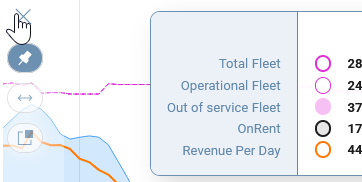

- Lock tooltip position – Fix the tooltip anywhere on the page by dragging it with your mouse. (When enabled, the following two options are disabled.)
- Adjust cursor distance – Set how far the tooltip should appear from your cursor.
- Chart boundary control – Decide whether the tooltip stays inside the chart area or can extend beyond it.
New booking evolution selector
You can now select the interval range of days for your booking evolution close to the [evolution] button instead of selecting it below the graph as before.
What it changes for me?
Nothing really as it is more straight forward and more user friendly to have this selector close to the tab name.
Where to find it?
In three different main menues
- Evolution tab in the Booking menu
- Evolution tab in the Treemap menu useful to have all main business dimensions at a glance
- Evolution tab in the Updater menu useful to have all the principle source of information grouped on one page

January 20, 2025
New Search Analysis Feature
The Search Analysis feature provides a comprehensive tool for understanding user search patterns on your website anticipating demand trends for car rentals, and identifying missed opportunities. It tracks all the searches of potential customers even if they didn’t complete a booking. With seamless integration with Google Analytics, the feature enables you to analyze how users interact with your booking funnel, empowering data-driven decision-making for improved business outcomes.

Key Benefits of Using Search Analysis
1 - Insights: Gain visibility into what users are searching for on your website, enabling you to identify emerging trends (e.g., increased demand for specific dates or vehicle types) and make timely adjustments to pricing and inventory.
2 - Demand Forecasting: Analyze search trends, such as rental dates, to predict future demand and optimize pricing strategies.
3 - Marketing Impact Analysis: Track the effectiveness of your Traffic generation marketing campaigns by comparing the increase in searches and bookings during specific periods.
4 - Sales Impact Analysis: Track missed opportunities by analyzing non-converting traffic alongside operational filters (e.g., station, rental duration) to optimize your sales strategy.
Want to know more about this new feature? Read our blog article on How To Gain visibility into the future!
Fleet Plan Management
Making informed pricing decisions requires a clear understanding of your fleet's capacity. To help you stay on top of your future capacity, we’ve introduced a new module that allows for seamless management of fleet infleeting and defleeting, directly within the app. This ensures you always have access to the most up-to-date data on fleet availability.
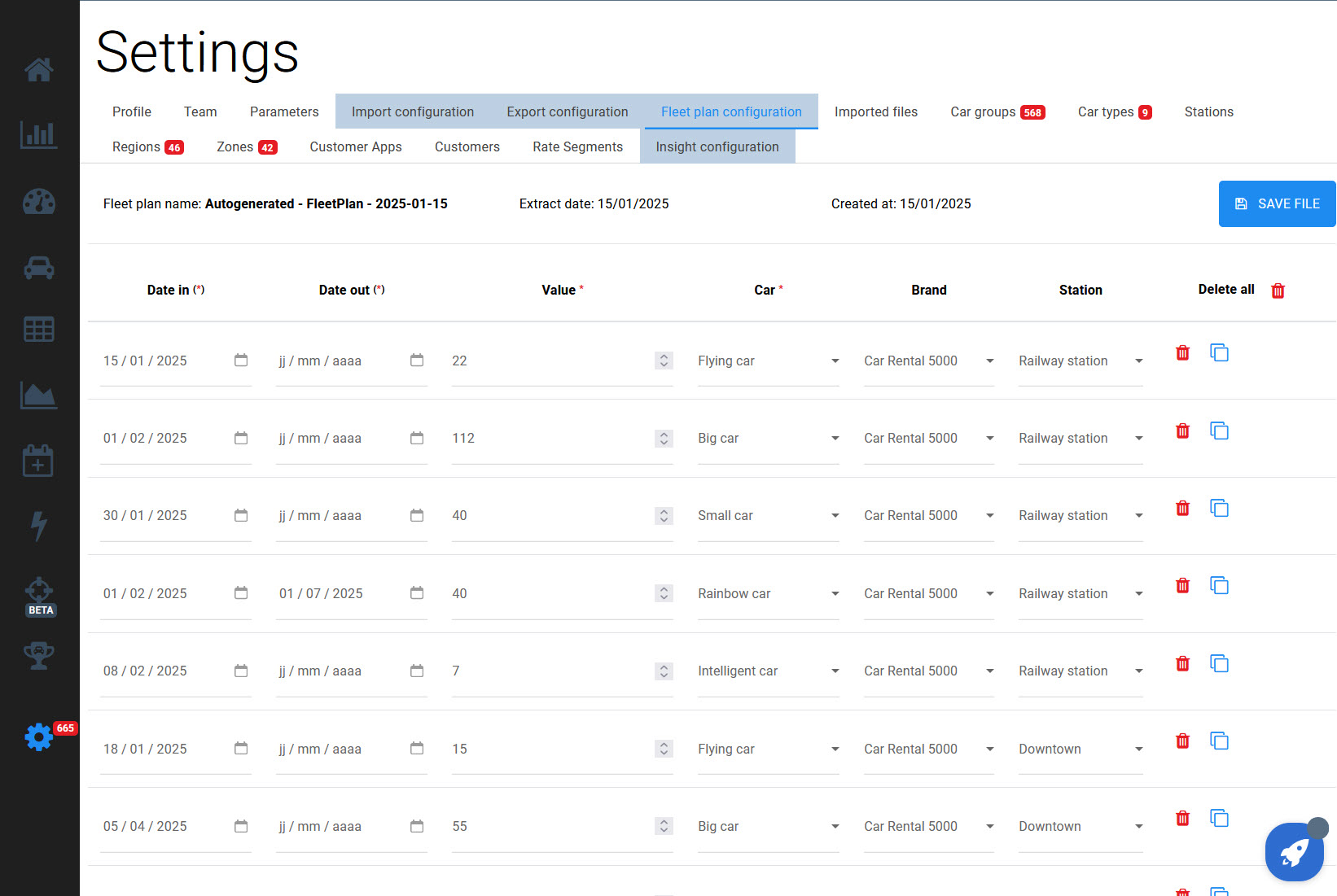
To enhance your fleet tracking with greater accuracy and precision, start optimizing your Fleet Plan today. This new feature is available upon request through your CSM. Book a meeting now!
Want to know how to update your fleet plan? Here the tutorial you need to improve your Fleet Management!
Rate Code Filtering
At WeYield we thrive to offer you with tools to better analyze and understand your business.
Our latest update introduces the ability to filter data by rate code across all operations modules. This enhancement allows you to gain deeper insights into the performance of each rate code, supporting more effective revenue optimization and ensuring greater revenue integrity.
With this feature, you can now refine your temporal analysis, ensuring that your decision-making is always guided by the most relevant, data-driven insights.
How to Filter by Rate Code:
1 - Click on the "Customer" drop-down menu

2 - Select the "Rate Codes" tab and choose the specific rate code(s) you wish to analyze.
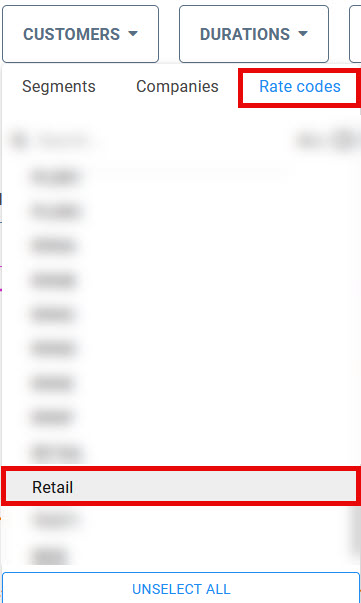
This new filtering capability is now available across all Operations Modules, including Booking, Treemaps, Updater, and Reporting.
November 20, 2024
New Date Picker
This update helps our customer to improve their temporal analysis, ensuring decision-making is always informed by the most relevant insights.
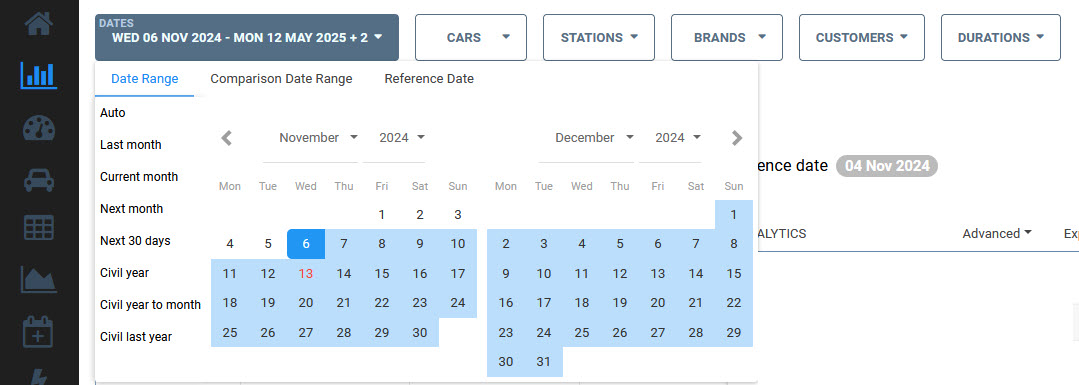
Core Benefits
- Intuitive and Accessible Interface: Built for ease, the new date picker integrates seamlessly across relevant modules, making advanced analysis effortlessly accessible to all users.
- Dynamic Date Ranges and Comparisons: Move fluidly between timeframes and comparison types - whether analyzing year-over-year trends, pinpointing event-based insights, or monitoring seasonal shifts.
- Data-Centric Decision Support: By delivering data insights tailored to your operational rhythm, the date picker serves as a powerful tool to help you stay agile, strategic, and data-driven in a competitive environment.
Key Innovations
1. Centralized, User-Centric Design
We’ve set the date picker to a primary, accessible position across all modules. Now, you can focus on setting and adjusting date ranges with ease.

2. Enhanced Year-Over-Year and Event-Based Comparisons
Our new date picker goes beyond basic year-over-year analysis by incorporating an “Event Comparison” feature for time-sensitive scenarios. This allows for precise comparisons of movable events - like Easter or Ramadan - that fluctuate annually, aligning your analysis with real-world calendar shifts and delivering highly relevant context.

Example: In 2025, Easter falls on April 20, compared to March 31 in 2024. With this feature, you can set a custom comparison to align your metrics, ensuring your data reflects the true business impact of these periods.

3. Adaptive Reference Date Setting for In-Depth Analysis
In previous Apps version, the reference date was displayed on the left, as a navigation element, sticked to the main menu. To enhance usability, we’ve introduced the customizable reference dates in the Date Picker. This update allows you to analyze booking portfolios or any historical period from a different Reservation Date perspective. This added flexibility gives you greater control, enabling you to identify emerging trends, optimize inventory, and benchmark more effectively against past performance.

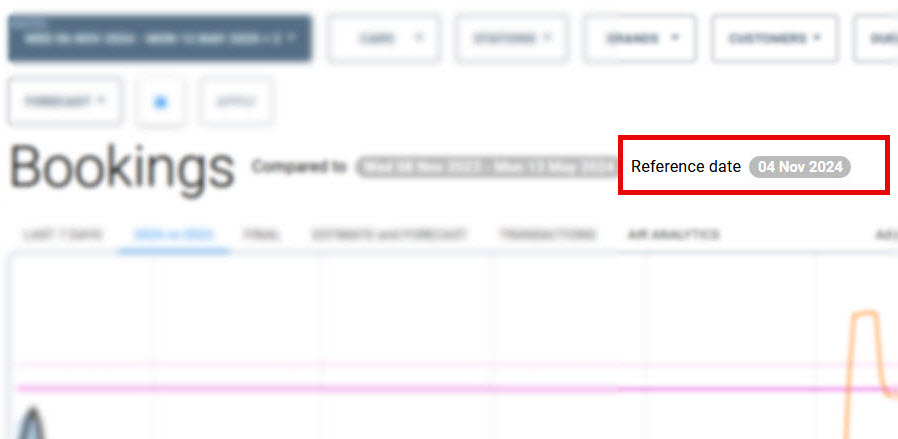
Bookings Page Design Update
We've revamped the design of the Bookings module, a core component of our Operations Suite. By simplifying the design, we've made it easier to navigate and use.
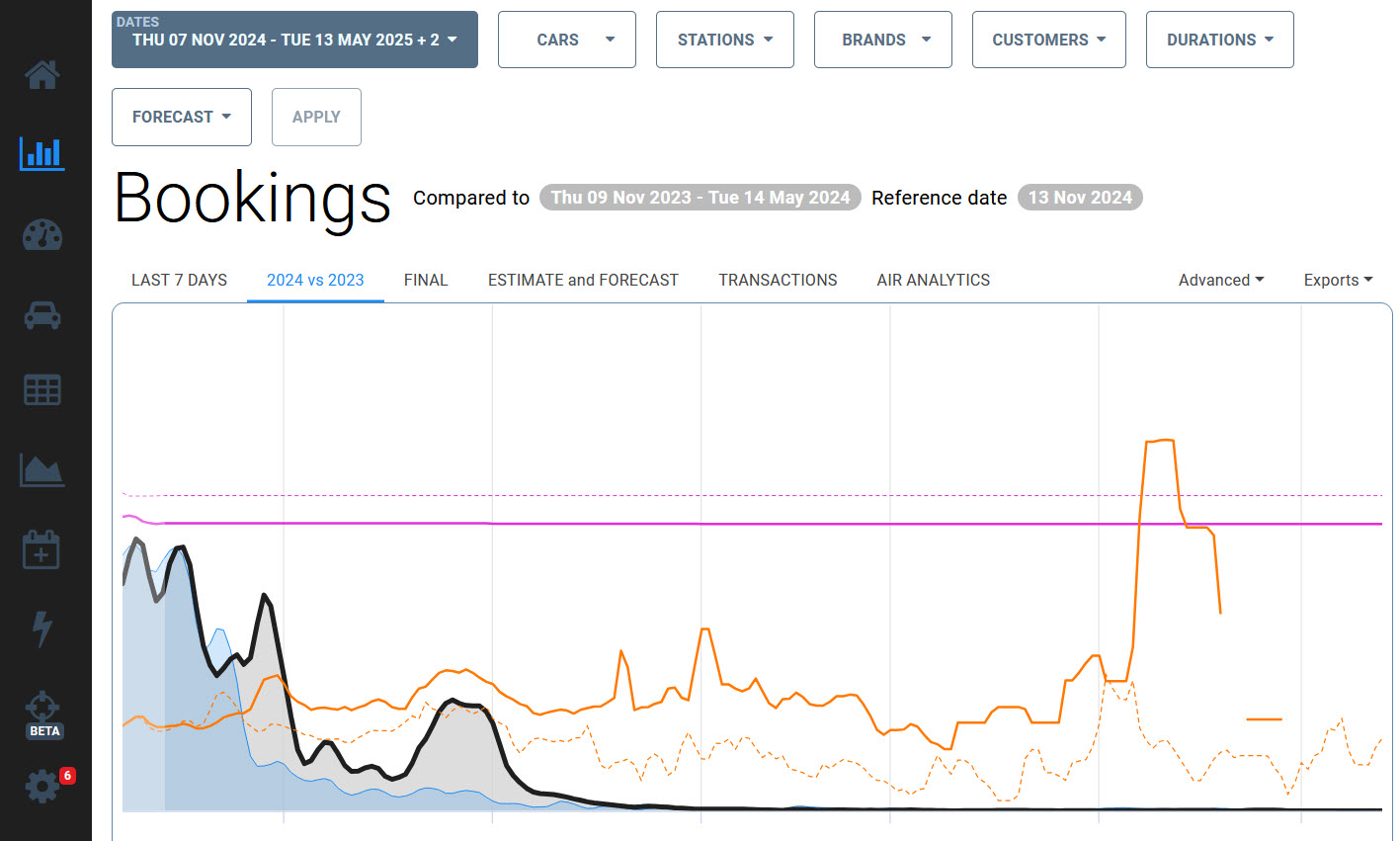
New dropdown menu added under the "Advanced" label, allowing you to select either RevCar or Revenue Per Day (RPD) as your KPI.

New Fleet Control View
The new and improved Fleet Control View has been designed to provide deeper insights into your fleet's performance. This table offers a comprehensive overview of critical performance metrics for each individual car type, car group, or region.

1. Extended date range
By extending the date range from 14 to 31 days, you can now identify potential maintenance issues or seasonal trends earlier, allowing for proactive planning and optimization. You can also more easily monitor your performances over a full month.
.

2. New Metrics displayed
Each indicator is presented at both the car type/group and total fleet levels. Understanding metrics like availability, utilization, RPD, and RevCar will help you optimize pricing strategies, improve fleet utilization, and increase revenue.

3. Current view and Estimate view
Our new dropdown menu lets you seamlessly switch between current and estimated values for all metrics. This allows you to easily switch between current and estimated values for all metrics, providing a more comprehensive view of performances. By enriching current data with the previous year’s trend, you can identify trends, potential issues, and opportunities for optimization.

4. New Color coding for better instant understanding
Our new color-coded system offers a more nuanced view of utilization levels. By using five distinct color brackets, we can easily identify specific performance ranges and make data-driven decisions to optimize fleet utilization.

Maximise your business performance with the best of technology and mobility experience

